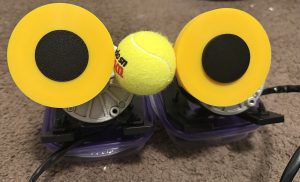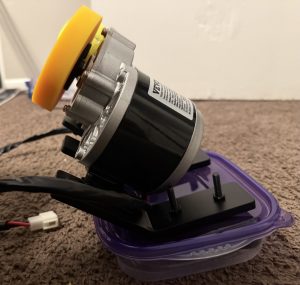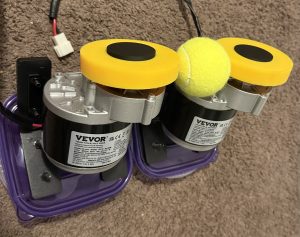The most significant risk that could jeopardize the success of the project is still the same, which is having the launching mechanism work. With the Design Report and all the physics calculations done, now we have to build the launching mechanism to see if the math follows following fall break. To mitigate the risk, we have purchased have a bike motor that significantly overshoots all of our finalized specifications to ensure we have room to make adjustments in case there were unexpected physical constraints. Furthermore, the Design Report has a section on Design Trade Studies, where there are other approaches to the launching mechanism discussed. If the spinning wheels do not work as intended no matter what we adjust, our contingency plan is to use a spring system that contains guaranteed energy.
No changes were made to the existing design of the system. We are also currently on schedule, so there are no updates to report. Following fall break, we will have our focus entirely on building the launching mechanism, figuring out CV, and working with our motor control board, so we are confident in our current progress.
Part A was written by Miles: Our project can affect many people outside of Pittsburgh and across the world, as throwing and catching a ball is one of the most universal pastimes. Furthermore, many sports (like soccer for example) are very popular in many countries and tennis balls are most commonly used to enhance training and hand-eye coordination. Anyone across the globe who regularly catches, whether for fun or training for a sport, can gain value from our product. Since our product automatically targets a person and shoots the tennis ball when ready, this launcher is feasible to use for those who are familiar or not used to technology. As a result, anyone who wants to catch a ball on their own can have a need for this product, regardless of where they are from.
Part B was written by Andrew: Our project could affect the culture surrounding sports and how people practice them. Typically, practice always involves multiple people and even some personnel used, like coaches or teammates, for menial actions such as throwing a ball, but our project could potentially change this norm. Entire franchises and organizations could potentially switch their traditional practice methods to using our product, allowing coaches to be put in more critical roles such as analyzing player performance. Additionally, our launcher allows all athletes on a team to receive proper training instead of being stuck on passing duty or having inconsistent balls thrown at them. This could also majorly change the traditions of a variety of groups, like sports teams or even recreational leagues, who may not have enough players.
Part C was written by John: From our perspective, our project does not have an appreciable environmental impact. The original problem itself had little to no effect on any environment or surrounding ecosystems, and our solution will also have no additional environmental consequences. As a result, we do not anticipate any positive or negative environmental effects from our project. Perhaps there is an off chance that by having the machine take up the duties of a ball thrower, like a quarterback, more people could practice sports outdoors anytime without needing to coordinate with a large group. To elaborate, normally if a dedicated ball thrower is not available, practice as a group would be difficult, but our product removes this barrier. This would mean greater physical activity instead of having people remaining indoors using electricity. However, since the launcher itself requires power, the overall environmental difference is small.








